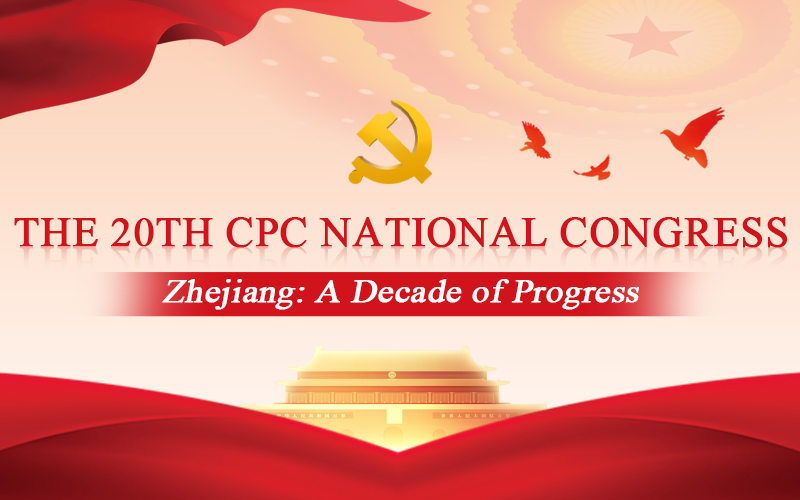Open markets to lure foreign firms
China is set to unveil a new, condensed negative list for market access, and remove more barriers to entry in emerging industries, so as to pave the way for greater business participation and foster a more enabling marketplace for both domestic and overseas entities, officials and experts said.
The move follows China's release of a guideline in late August aimed at enhancing the market access system, demonstrating how the world's second-largest economy is enacting the reforms outlined in the resolution endorsed during the third plenary session of the 20th Central Committee of the Communist Party of China in July.
Experts said that China's ongoing efforts to refine its market access system and remove barriers showcase the country's firm determination to foster a better integration of efficient markets and competent government. This approach is expected to further stimulate market vitality, nurture new high-quality productive forces and promote long-term growth.
The essence of market access lies in its role as a gateway through which economic participants enter the economic arena, and the market access system represents a focal point in the relationship between the government and the market, said Luo Wen, head of the State Administration for Market Regulation.
It is only through the establishment of an open, transparent, regulated, equitable and well-supervised market access system that the government can bolster market oversight effectively, thereby unleashing the full potential of the market in resource allocation, Luo said.
This, in turn, enables the government to better fulfill its role, empowering business entities with autonomy, stimulating market dynamism and fostering a business environment that embodies principles of market orientation, legal governance and international standards, Luo added.
Li Chunlin, deputy head of the National Development and Reform Commission, said that the commission is working with relevant departments to advance the revision of the market access negative list.
China's unified market access negative list was first issued in 2018, where industries not listed on this negative list are open for all types of entities to enter on an equal basis.
Since its inception, this negative list has undergone a process of continuous refinement, shedding regulatory weight with each subsequent edition. Over the years, the list has seen a reduction in the number of items from 151 to 117.
Furthermore, in recent years, the NDRC, in collaboration with relevant departments, has eliminated over 20 unauthorized negative lists for market access that were established by local authorities, thereby rectifying practices that contravened existing regulations.
The relaxation of entry restrictions in areas such as elderly care and healthcare is expected to empower a diverse range of entities to engage more vigorously in economic activities, driving innovation and efficiency within these sectors, Li said.
Despite efforts to enhance market access regulations, lingering unreasonable restrictions and hidden barriers continue to impede progress in China's business landscape.
Wang Chenwei, director of the Macroeconomy Research Office at the NDRC's Economic System and Management Institute, said that certain sectors still grapple with incomplete institutional frameworks, while regional protectionism and market segmentation issues persist in some areas, obstructing the construction of a unified national market and fostering fair competition.
As a new wave of technological revolution and industrial transformation continues to unfold, characterized by rapid advancements in disruptive technologies, concerns have emerged regarding the lack of clarity in entry rules for emerging sectors and formats, Wang said.
The pace of innovation and the dynamic nature of these industries have highlighted issues such as overly stringent regulation over market entry management, underscoring the imperative to refine relevant entry systems, and better facilitate the development of new sectors and formats, Wang added.
The guidelines identified deep-sea exploration, aerospace, aviation, life sciences and health, new energy, artificial intelligence, trusted computing, information security, intelligent rail transportation and the modern seed industry as new formats.
While the current guideline has defined 10 specific emerging sectors and fields, this represents a dynamic and evolving process. Going forward, this list is poised to undergo continuous expansion and adjustment in lockstep with the rapid pace of technological development, experts said.
Guo Liyan, deputy director of the Economic Research Institute of the Chinese Academy of Macroeconomic Research, said China is gearing up to revolutionize its approach to market entry management in these emerging sectors, emphasizing a departure from traditional administrative approval-centric models toward a more market-oriented paradigm.
The focus lies on gradually relaxing or even abolishing entry restrictions for new formats and fields that do not pose threats to national security or social stability, Guo said.
Given the inherent uncertainties of some emerging sectors, it may not always be feasible to establish exhaustive standards akin to those in mature industries. This flexible approach aims to create space for experimentation and innovation, nurturing a conducive environment for the development of new technologies and industries, Guo added.
A more flexible and accommodating market access system will play a crucial role in catalyzing the translation of technological advancements into market-ready solutions, ultimately contributing to the growth of the high-tech industry and bolstering China's position as a global innovator, Guo added.
When issues become apparent in the development of these sectors, adjustments to entry standards are deemed necessary to encourage progress, weed out outdated practices and ensure the orderly functioning of the market, said Liu Xiangdong, deputy head of the China Center for International Economic Exchanges' Economic Research Department.
Noting that regions nationwide are racing to capitalize on the burgeoning low-altitude economy, Liu said that concerns loom over a slew of issues encompassing safety, industry standards and regulatory frameworks for entry into this nascent sector.
The rapid development of the low-altitude economy has brought to the fore a pressing need to swiftly refine market access regulations in response to operational realities, aiming to avert potential chaos such as unregulated aerial activities, Liu added.
The guideline also advocates a coordinated approach where adjustments made to foreign investment access are mirrored in domestic investment regulations, and vice versa, without compromising the opportunities available to existing businesses.
If restrictions on foreign investment access are lifted, parallel measures will be implemented to open up avenues for domestic investors. Similarly, in cases where entry thresholds are established for domestic investors, foreign investors will be subject to comparable standards, ensuring equitable treatment across the board, according to the guideline.
The guideline not only champions a level playing field that ensures fair treatment for all entities, but also allows foreign investors to benefit from enhanced clarity and predictability in regulations, said Bai Ming, a researcher at the Chinese Academy of International Trade and Economic Cooperation.
This development will pave the way for a more rapid establishment of an open economic framework, and is poised to attract a greater influx of foreign capital into the country, enabling international businesses to participate in and benefit from China's ongoing development opportunities, Bai added.


 Connecting Global Perspectives, Focusing on Zhejiang's Practices
Connecting Global Perspectives, Focusing on Zhejiang's Practices Shaoxing Showdowns
Shaoxing Showdowns Zhejiang: A Decade of Progress
Zhejiang: A Decade of Progress